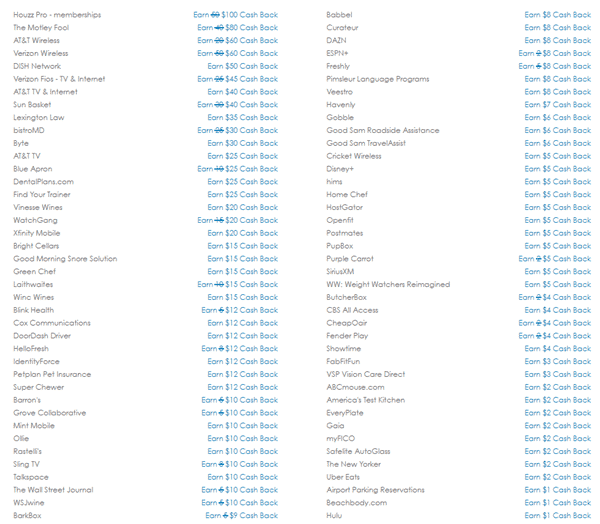
The process of developing an aggregator website is simple, but it's not without challenges. The type of content that you wish to share will determine which one is best for you. First, create a design that is appealing to your audience. It should be simple to use the aggregator site. It should also be easy for users to update. Lastly, you need to be aware of the legalities involved. It is important to avoid plagiarism and to ensure that your collected content is useful and interesting for your visitors.
Aggregators are needed for end-users and buyers of similar products. These websites combine relevant products into one place. These websites fit well because of their user-friendly interface. Moreover, their primary selection of quality is based on the aggregator's review process. You will need to select the best one for your company. But it is crucial to get to know your audience and identify the most important aspects of their content.

As the content is compiled, it's important to make sure it's relevant to your audience. Although an aggregator site may have more information than the source website, users can find it overwhelming. It's important to have filtering options available. By making your aggregator more comprehensive and relevant to your target market, you'll be able to attract more organic traffic and a bigger audience. It's worth the effort!
During the research phase, you should identify the topics you plan to specialize in. You can likely create a niche if you are targeting the same audience that your target audience. You can also create a news site that's easy-to-start and manage, so you can collect the best content. As long as you're careful to protect the rights of the original content creator, you can be sure that your business will thrive.
Flipboard is another website that allows users to create their own blogs. You can choose from many different sources and customize the articles. You can also use this site as a local news source. There are feeds for most cities around the world. The interface of this aggregator website is easy to use and intuitive. You can also share the content via your social media accounts. You can also use the app on mobile devices to view top articles.

If you are looking to find a greater selection of content you might want to look into User-Curated Agregators. These sites offer articles from more sources than traditional news aggregators. For example, you can subscribe to news stories from your favorite sports teams or celebrities. These websites provide more relevant content that traditional media sources. It will be easier to find the right niche aggregator if you are searching for it.
FAQ
What is a Content Strategist and how do they work?
Content strategists help brands tell stories through engaging messages that are emotionally connected to their audience. They are storytellers who focus on telling brand stories that help people make decisions and take action.
Content strategists can create strategies that are engaging for current and future customers. They combine storytelling and data analytics to create experiences that encourage customers to visit stores and buy products.
They also understand how to integrate social media platforms into these campaigns. And they use technology tools such as video and virtual reality to deliver powerful customer experiences.
A content strategist is responsible for translating these ideas into concrete plans that marketers can implement. This includes creating content that can be used on different media (such as television or print), and developing creative briefs. Budget management is also an important part of the job.
How to use blogging to generate leads for your business
Online leads are crucial to B2B companies' success. Many businesses are struggling to convert traffic into qualified prospects despite knowing this. Here are five reasons why you might not be generating qualified leads.
Reason 1: You Are Not Optimizing Your Website - Even Though You Have A Blog, You Aren't Making Money! Blogging is a great way to attract new customers. However, blogs that don't help your target audience solve their problems will not make you money.
To ensure your blog is profitable, optimize it by ensuring it meets search engine guidelines and uses keywords people are searching for. This improves the likelihood that visitors will find your blog post.
Once they've found your blog, you need to provide value by answering all their questions and offering solutions right away.
Keyword Toolbox is a good tool to help you find keywords. You can then add the keywords to your page title or meta description, as well as to your body text.
Your blog should contain calls to action (CTAs). CTAs can also be used to encourage readers take specific actions like signing up for your newsletter and purchasing a product.
These actions increase the chances of a sale. They also give you an insight into what information users are looking for.
For help in starting a blog, see our guide on How to Start A Successful Blog.
Reason 2 - You don't know how to write. But once you start writing, the ideas will come quickly. Then they stop!
It takes time and effort to establish yourself as an authority in your niche. Writing about topics that are relevant to your clients is key to this success.
Your goal in writing is to answer "Why should I Hire You?" Keep your eyes on the problem when you write.
This will help you stand apart from other businesses that are just trying to sell products.
Your blog must not only be useful to your prospects but also to them. Your expertise can be used to educate others. You might share information about the latest trends or offer tips on how to save money on home improvement projects.
Provide links to other resources that will help your viewers learn more about these topics. These resources could include articles, videos, podcasts, and/or podcasts written by experts in the field.
Reason 3: There are no clients. You don't need them. You just need to sell more.
There is no quick way to build a successful company. It takes time and trust to build relationships with your target customers.
However, you don't need to spend hours creating content if you aren't ready to connect with potential clients. Post ads on social media platforms like Facebook or LinkedIn instead.
In order to avoid overspending on advertising that is ineffective, make sure you target the right demographics for your ideal client. For instance, if you run a website design company, you probably have many female clients.
Instead of targeting all males, you could target females by location, age group, income and many other criteria.
After creating your ad on the internet, follow up with a message sent to potential customers.
You don't need to pay for each person who visits your site. Some sources of traffic are more lucrative than others.
One example is hosting a contest for those who sign up via email. You could also offer gifts to subscribers to your mailing list.
Here's the key: Find creative ways to draw visitors without spending too little.
Reason 4: Advertisement is not feasible - you are too busy running your business to spare the time.
Your work should always be prioritized over your business. If you're too busy with your business, you won’t be able grow it.
It is possible to feel overwhelmed by the amount of tasks that you have each day. You may not be able to prioritize them properly.
You can start by getting organized. You can set aside an hour each week to review your work and plan what you should do during the rest.
It will be easy to manage all the other tasks once you have started.
What are the benefits to content marketing?
Content marketing helps drive leads and sales by creating high-quality content. Content marketing offers a steady supply of new, original content that can then be used to promote products or services. Content marketing also increases brand awareness and trust among potential clients. Additionally, content marketing helps to project a positive image about your company.
Statistics
- Out of the 1,500 marketers we surveyed for our State of Content Marketing report, 78% who felt their content marketing strategy was exceptionally effective in 2021 had documented their strategy. (semrush.com)
- Seventy-two percent business to business (B2B) (mailchimp.com)
- According to our research, 65% of companies with very successful content marketing in 2021 ran content audits at least twice a year. (semrush.com)
- In fact, would pay more for a better customer experience, and 86% of B2B buyers would pay more. (neilpatel.com)
- An example of an overarching goal could be: "In 2022, we want to achieve a 20% increase in revenue created by organic content and generate 15,000 MQLs with a budget of $30,000." (semrush.com)
- We found that 40% of businesses don't have a documented strategy yet. (semrush.com)
- Measure your goals with a progress indicator of 0-100%. Make your goals collaborative and transparent (semrush.com)
- Progress indicators (0–100%) allow each team member to see how attainable each goal is and understand what remains to be accomplished. (semrush.com)
External Links
How To
Informationgraphic creation tips for content marketing
Infographics are a powerful way to simplify complicated concepts, and make information easier to understand. Content marketing aims to provide useful and valuable information to your target audience, so you should consider using infographics to help spread this message.
You'll need design software such as Adobe Illustrator or Photoshop to create an infographic. These programs can be used for drawing out shapes and elements to represent data. After that, you can add fonts and colors to make it look professional. After your design is complete, you can upload images from Unsplash and Pixabay to your design.
Check out existing infographics online to get some ideas. For example, if you want to show how many calories are in certain foods, you could take a picture of a food pyramid and replace the numbers with pictures of those foods. Or, you might choose to look up how much sugar is in soda pop and change that number to a picture of a bottle of Coke.
Once you've designed your infographic, you can share it through social media channels like Facebook and Twitter. This will make it easier for people who don't know the concept to get familiar with it. Include hashtags if you plan to share your infographic via social media platforms. This will allow others to see what you're talking. Users can follow conversations around specific topics using hashtags.
Make your infographics shorter than normal if you are creating them. An average blog post is between 2000 and 5000 words, while an infographic takes 500 to 1000 words. This means you can easily convey more information with less space.
Make sure you consider that your infographic will be difficult to read by some viewers. It is important to use large fonts and avoid relying too heavily on colors when designing your infographic. Also, ensure all text is legible.
These are additional tips:
-
Choose an Infographic Template. You can find many templates online or in printed formats. Canva (Piktochart) and Google Slides (Google Slides) are some of the most requested templates.
-
Create your Infographic. Use the template below to create your infographic. Any media you choose is acceptable for your audience. You might use photos of local restaurants to create an infographic about the best places in Seattle.
-
Add text. Add text once your infographic is created.
-
Add Images. Your infographic can also include images. You can add images to your infographic. Make sure the picture is relevant to your topic before you add it.
-
Make It Interactive. Interactive elements like buttons, maps and links can be added to your website. This will engage your audience.
-
Share. Share your infographic when you are done.
-
Measure. Your infographic's performance. Are people clicking through to your website or not? Did they signup for your mailing list? What was their reaction when you showed them your infographic
-
Improve. Is there a way to improve your infographic? Do you think your infographic could be better?
-
Repeat. Repeat.